Name Michael Zansky Role Artist | ||
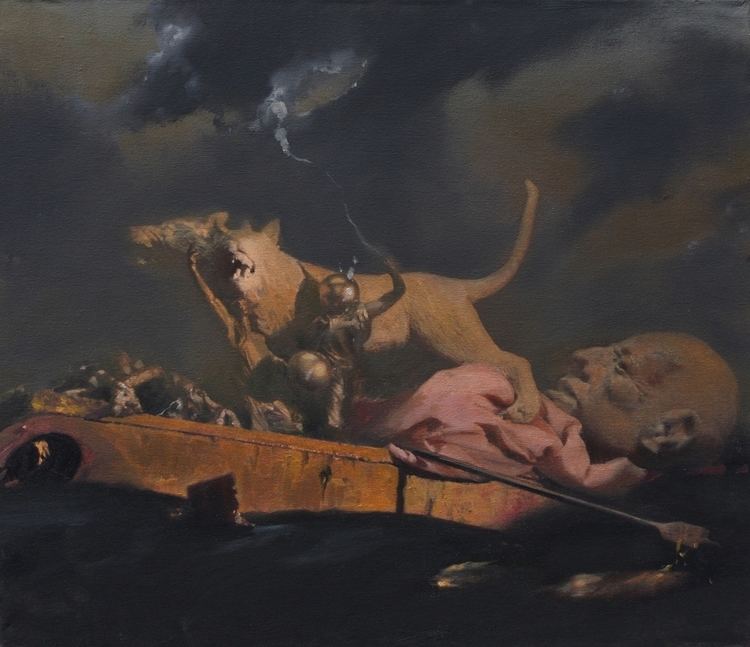 | ||
People also search for Ellen Kuras, Andy Keir, Manuel | ||
Production designed Neil Young: Heart of Gold | ||
Stux gallery michael zansky
Michael Zansky (born 1947, in the Bronx, New York) is an American artist working in installation art, sculpture, painting and photography. He has been represented by the Nicholas Robinson Gallery in New York since 2003.
Contents
- Stux gallery michael zansky
- Michael zansky art opening at briggs robinson gallery
- Early life
- Fine artist
- Exhibitions
- Scenic artist
- Critical reception
- Awards
- References
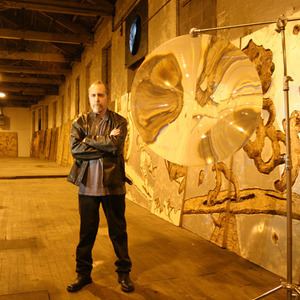
Michael zansky art opening at briggs robinson gallery
Early life

Michael Zansky was born in 1947 in the Tremont section the Bronx, into the family of Louis Zansky, a noted comic book illustrator. After graduating from New York City’s High School of Music and Art, Zansky entered Boston University, Boston, MA, where he graduated in 1969. While attending Boston University, he heard lectures by Philip Guston. At Hunter College in New York, Zansky studied with Robert Morris and John McCracken.
Fine artist

Zansky's cycle History as Ruin, which began in 1992 with an exhibition at Berry-Hill Galleries, Exit Art and the Aldrich Contemporary Museum of Art, consists largely of 200 individually carved and painted 4 X 8 foot wooden reliefs and freestanding sculptures. In a catalog essay by Donald Kuspit, he states: “There is nothing like Zansky’s work in modern art, certainly not in contemporary art. It holds its own with Goya’s “Quinta del Sordo” paintings, and extends their fantasy into more irrational terra incognita than Goya ever imagined in his worst dreams.” David Aust (July 2010). "Michael Zansky mid - century modern abstract art". Painting. RubyLane. Archived from the original on 2013-02-01. Retrieved 9 July 2012.

In 1994, Zansky began a series of works collectively titled TracesZansky,Michael (5 June 2010). "Artist Michael Zansky". Artist Michael Zansky. Saatchi. Retrieved 10 July 2012. . For the catalog essay on Zansky’s solo show at Berry-Hill Galleries, Inc., New York, NY, Thomas McEvilley wrote: “Zansky’s work participates in a common thematics of the post-Modern moment – a reconsideration of the relationship between nature and culture. In the Modernist period these forces had been regarded as rigorously separate and indeed antithetical. The triumph of culture would consist precisely in its domination of nature: the triumph of nature in turn would be its erosion of culture back into the primeval swamp. Zansky’s work goes beyond this dichotomy in directions pointed in the art discourse by such seminal proto-post-Modernists as Robert Smithson and Joseph Beuys. For Zansky, as for both of these artists, it is the natural resolution of civilization that it should dissolve into the swamp again, and the natural expression of the swamp that it should contain a life force always ready to sprout anew.”
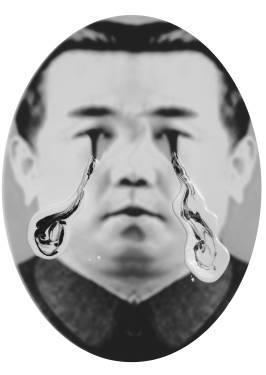
Giants and Dwarfs: In her curator’s statement in the catalog essay for the exhibition Land Mine at the Aldrich Contemporary Art Museum Jessica Hough wrote "In the kinetic sculpture from the series Giants and Dwarfs, Zansky manipulates scale using a series of large lenses positioned around a rotating carved wooden object. The object, which has been carved from plywood, looks like driftwood, a desiccated animal carcass, or a meteor – morph the viewer’s perspective so that the object continues to shape-shift. It is large and small; organic and celestial. Zansky’s sculpture, along with all of the work in Land Mine, reminds us that truth must be mined and that human history easily eludes us."
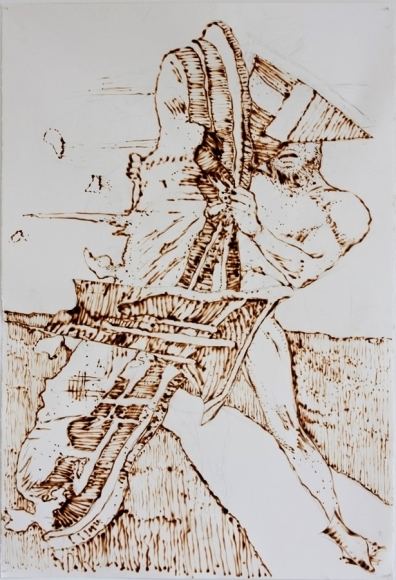
Optics became an important element in Zansky’s art starting with a series titled Still in Motion (2003), which was a precursor for the series The American Panopticon. Bradley Rubenstein wrote in ARCO Madrid 2005 catalog when describing Zansky’s lens installation The American Panopticon: “Astolphe de Custine, writing about the late 19th century Czarist Russia, said “we are all tormented with a desire to know a world which appears to us a dungeon. I feel as if I could not depart in peace out of this narrow sphere unless I endeavored to explore my prison. The more I examine it the more beautiful and extensive it becomes in my eyes.” Peering into the void, or examining things better left unexamined is the material of Zansky’s work. One is reminded of Duchamp’s Precision Optic experiments… image making machines to demonstrate the idiocy of “retinal art.” Zansky takes it a step further by creating the device, and then focusing on objects reflective of life in the 21st century. Again Duchamp reminds; the only contributions America makes to culture are her bridges and plumbing.”

In his most recent series, The Western Lands, Zansky uses digital, color photography as an end product. In contextualizing this new series, Kathleen Goncharov wrote in her essay for a solo show at Nicholas Robinson Gallery, Michael Zansky: The Western Lands, "The title of this exhibition, The Western Lands, refers to the western banks of the Nile, which in the determinist belief system of ancient Egyptian religion is the netherworld, The Land of the Dead. It is also the title of a 1987 William Burroughs' novel that explores the theme of death through a fantastic narrative, referencing Egyptian mythology, science fiction, occultism, hallucinogenic drugs magic, dreams, magic, vampires, and figures from popular culture. The bizarre confluence of characters and the utter strangeness of the novel are echoed in Zansky’s installations and photographs. Burroughs’ book and this exhibition are both counterpoints to the eternal and unchanging cosmos of the ancient Egyptian worldview. Zansky’s visual universe is as uncertain and weird as the literary one Burroughs inhabits."
Exhibitions
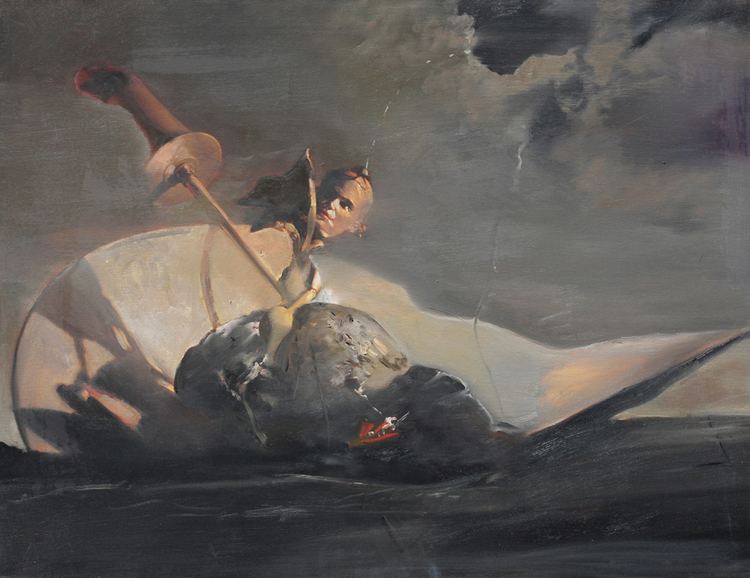
Zansky's work has been shown widely at galleries and museums around the world including Barbara Gladstone Gallery, New York, NY 1978, White Columns, New York, NY 1985, 86 & 90, Albright Knox Gallery, Buffalo, NY 1986, Drawing Center, New York, NY 1988 & 2002, Calvin-Morris Gallery, New York, NY 2989, 93, 96, 98 & 99, Berry-Hill Galleries, New York, NY 1990, 91, 93 & 96, Rockland Center for the Arts, West Nyack, NY 1994, 96, 98, 2003 & 04, Detrusa Galerie, Madrid, Spain 1995, Hunterdon Museum, Clinton, NJ 1996, Exit Art, New York, NY 1999, 2000 & 05, Universal Concepts Unlimited 2000 & 02, Norton Museum of Art, West Palm Beach, FL 2001, Slought Foundation, Philadelphia, PA 2003], Nicholas Robinson Gallery, New York, NY 2003, 06 & 08, Galerie Lelong, New York, NY 2003, ARCO (Madrid's International Contemporary Art Fair), Madrid, Spain 2005, GAS (Gigantic Art Space), New York, NY 2005, Lab Gallery (for installation + performance art), New York, NY 2005, 06, 08 & 09, Edsvik Konsthalles, Stockholm, Sweden 2006, The Aldrich Contemporary Art Museum Ridgefield, CT 2006 & 08, SICA (Shore Institute of Contemporary Art), Long Branch, NJ 2006, Nassau County Museum of Fine Art, Roslyn Harbor, NY 2007, Kasia Kay Art Projects, Chicago, IL 2007, MONA (Museum of New Art), Detroit, MI 2007, Fieldgate Gallery, London, England 2007, Sandy Carson Gallery, Denver, CO 2007 & 08, Corn Exchange Gallery, Edinburg, Scotland 2008, Dorsky Gallery Curatorial Programs, Long Island City, NY 2009 and Florida Atlantic University, Boca Raton, FL 2009. He is represented by Nicholas Robinson Gallery in New York, NY.
Scenic artist
Zansky left graduate school before completing his degree to pursue two parallel career tracks, one in fine art and the other in film where he has worked as a scenic artist and production designer directors such as Terry Gilliam, Francis Ford Coppola, Adrian Lynn, Joel Schumacher and Jonathan Demme. Zansky has had an extensive career as a scenic artist for numerous television series and films such as Law & Order: SVU, The Sopranos, Neil Young: Heart of Gold, Donnie Brasco, The First Wives Club, Godzilla, The Juror, The Fisher King and Fatal Attraction, and as a production designer in off-Broadway theater.
Critical reception
In Kathleen Goncharov’s catalog essay, "Michael Zansky: The Western Lands" for Michael Zansky’s 2008 exhibition at Nicholas Robinson Gallery in New York, she wrote “Zansky resembles an archaeologist who digs through Walter Benjamin’s ruins of history, or a forensic scientist who examines the minutiae of the crime scene of civilization. He investigates humanity’s successes, follies, and especially failures, when Goya’s sleep of reason does indeed produce monsters. The masterpieces of the great Spaniard cast a long shadow over Zansky’s work, especially “The Disasters of War” and “Los Caprichos,” as do other works in the Prado such as Bosch’s hellish triptych “The Garden of Earthly Delights,” and Velasquez’ enigmatic “Las Meninas.” Zansky literally sifts through the detritus of our culture for his materials. Garbage bags stand in for water, torn lampshades for towers, and glass marbles for planets. Discarded action figures, tourist kitsch, toy clowns, and thrift store figurines are all actors on Zansky’s historical stage.” Zansky's work has attracted much attention by critics and writers world wide, with reviews, features essays appearing in such publications as The New York Times 1990, 93 & 2004 [1][2][3], ARTnews 1994, Art in America 1998 [4], Art Papers 1999 [5], Art on Paper 2000, Artforum 2004, The New Yorker 2005 [6], dART 2006 [7], Sculpture 2007 [8], Contemporary (magazine) 2007 [9], Flash Art 2008 [10], Time Out New York 2009 [11], the M magazine 2009 [12], "America or Glow/Amerika," by John Kinsella and NYARTSmagazine 2007 [13][14][15]. In the March/April 2007 issue of NYARTSmagazine, Amanda M. Vail wrote "“Quantum Circus” is a sculptural environment; the artworks cannot be separated from each other and retain the same meaning. Patterns emerge as time is spent in the gallery absorbing the atmosphere, listening to the mild cacophony, watching the mesmerizing play of the videos or the revolving sculptures. Quantum Circus I—a huge hodgepodge of distorted dictators, quotes, World War II battle maps, art historical images and chaotic, cause-and-effect lines—exemplifies the show’s dialogue on the rise and fall of empires—religious, artistic, historical or otherwise. Myriad references to anything from the Bible to quantum physics lead off on fascinating tangents. In bringing them together, Zansky and Stanislav attempt to show just how truly unusual the chimera of human experience can be."
In 2004, in a catalog essay for the exhibition "Ten Extra Seconds" at Briggs Robinson Gallery in New York, the art critic Thomas McEvilley wrote “Walking into the world of Michael Zansky’s sculpture is somewhat like walking into a world governed by Aristotle’s theory of physical laws. Or, perhaps, that famous theater performance designed by Leonardo in which the performers turned crystalline globes, reflecting light, so that they seemed like planets revolving in space. In a certain sense, Zansky’s work relates to all of this, as well as early telescopes, lenses, Renaissance perspective boxes and a host of other, early attempts to pin down exactly the order of the universe...Zansky sees the uncertainty of it all as an element of humor, like a dog chasing its tail. In a sense, it is like the experience of Renaissance perspective when it was new, and the human came up against the cognitive of experiencing space in a new way."
Christopher Chambers, in a review published in Flash Art (December 2008), wrote, "For the last several years Michael Zansky’s work has evolved along several different avenues, including photography, kinetics, optical tricks and handcrafted whatsits. With this exhibition he has merged these diverse pursuits. It is a personal triumph for the artist ... His art is both learned and hilariously stupid; intelligent and irreverent: his world is seen through massively disjointed and ever-shifting paradigms."
Awards
Zansky has been awarded a Louis Comfort Tiffany Award (1978), a Fulbright-Hayes Fellowship in Peru (1978), a C.A.P.S. Fellowship/Painting (1980), and an Emily Hall Treamaine Foundation Award for the Intelligent Design Project (2006).
